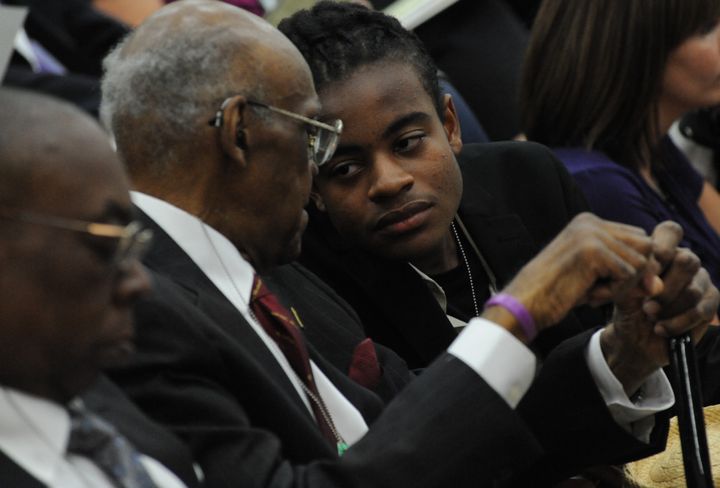
Intergenerational Teams Tackle Tough Issues
One thousand people, 61 countries. What an honor to be invited to the United Nations Headquarters in New York to address the Department of Public Information’s annual NGO convening in early August.
For me even more thrilling was the conference theme of “Intergenerational Dialogues on the Sustainable Development Goals.”
On August 12th we celebrate International Youth Day. In honor of the incredible young people who took part in the convening earlier this month, I wanted to share my address about the fundamental importance of intergenerational innovations.
It began…
The most powerful answers to the challenges we face at all levels are those that value and engage the strengths of each generation.
They honor the "Grandparent Advantage”-- the recycling of knowledge and carriers of culture--as well as the "Youth Advantage" – the fresh ideas and energy--that, when combined, are unstoppable.
Intergenerational solutions – thoughtfully crafted like the UN’s Sustainable Development Goals (SDGs) – link the lives of all generations at all levels whether that be family, community, country or beyond.
They are constructed to lift integrated solutions and foster social inclusion.
They change people's perception of our bookend generations – our young and old that hold our civil societies together –from burden to benefit, recipient to replenisher, disregarded to dignity.
But the authentic engagement of those bookend generations cannot be an after-thought or by-product of the implementation plan. They must be a part of the planning and must be intricately and intentionally woven into the solutions countries develop to advance the SDGs.
What can this look like?
It can be as simple as an example from Scotland, where a young man, Fraser, cleverly decided to pair his need for healthy exercise with the need for social connection and fresh air of older adult residents in a care home.
Rigging his bicycle with a carriage in the front, Fraser gave rides to elders five or six times a week.
As one woman said: "When my family visits, we go from the home to the car to the coffee shop to the car back to the home. It's marvelous to go out on the bike with the fresh air and wind in your hair."
Other solutions can be as complex as tackling what may seem like unrelated issues.
Take the U.S. student loan debt and the desire to age in place both of which are receiving a great deal of attention.
How do we address these together, borrowing examples from other countries, and applying an intergenerational solutions lens?
That’s the question we’re working to answer. We’re developing a plan that includes students living with older adults in exchange for agreed upon services or in a neighborhood providing agreed upon services to several older adult households.
The plan may also include an income model with students paying rent to older adults, which would help them financially be able to stay in their home. In exchange, the student would get a reduction in their student debt.
It's a win-win-win.
These answers are innovative and inclusive. They result in a deeper understanding, richer quality of life, and higher use of the human capital asset of all generations.
In closing I’d like to share a story.
About 40 years ago, when I was 22, I directed my first intergenerational program at the YWCA in my home state of Oregon. The program matched high school sociology students with low income, isolated seniors living in their own homes.
Funding was running out and I thought: if we needed to end the program, we would.
That was before I went out on my first visit.
What I found were older adults who didn't get out of bed in the morning except for the day their young friend was coming to visit. I also discovered who young people who skipped school except for the day they were going to visit their older friend.
They both had purpose, they were needed.
We kept the program going. The local paper did a feature story on it and included a color picture of one of the pairs.
The woman was in her 80s with white hair. The photo shows her reaching across the table to pat the hand of the young man who visited her every week.
He wore a black leather jacket and had a red Mohawk haircut.
Her quote: "He may look a little strange, but he's such a nice boy."
Intergenerational solutions build bridges, honor all ages and help to strengthen communities around the world.
]�ܜic
